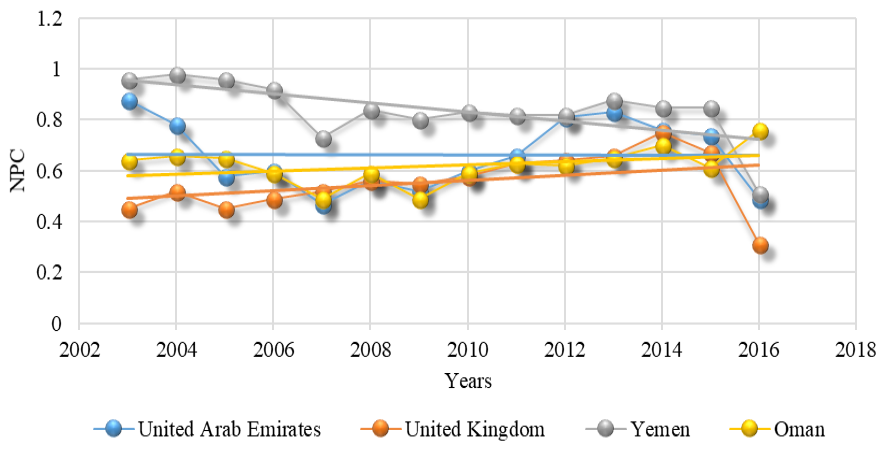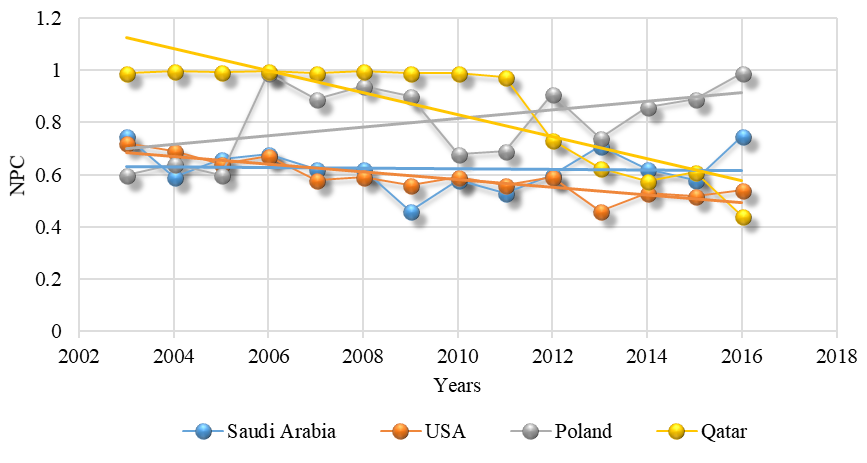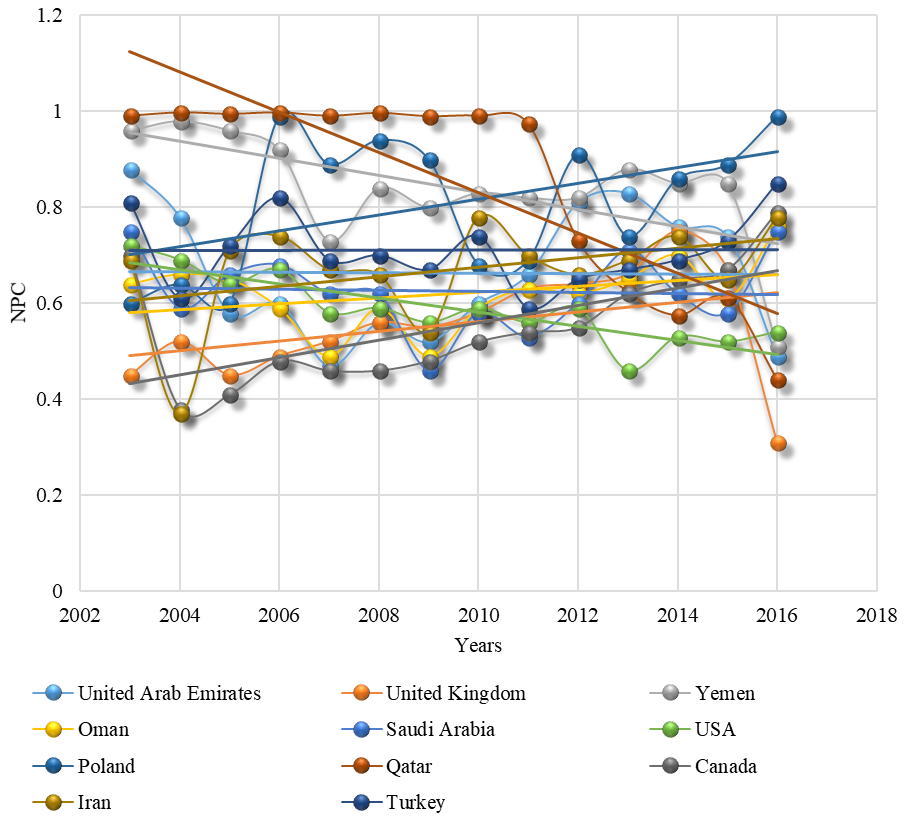Pakistani Basmati Competitiveness in International Markets and its Macroeconomic Factors
Iqbal Javed1, Abdur Rehman2*, Farhana Khaliq1, Amar Razzaq3, Mudassar Yasin4, Ghulam Mustafa5, Allah Bakhsh6 and Raheel Saqib7
1Department of Economics, University of Lahore, Sargodha Campus, Sargodha, Pakistan; 2Gomal University Dera Ismail Khan, Pakistan; 3College of Economics and Management, Huazhong Agricultural University, No. 1, Shizishan Street, Hongshan District, Wuhan, Hubei Province 430070, PR China; 4Department of Agricultural Extension, MNS University of Agriculture, Multan, Pakistan; 5Department of Economics and Business Administration, University of Education, Lahore, Pakistan; 6Institute of Agricultural Extension and Rural Development, University of Agriculture, Faisalabad, Pakistan; 7Department of Agricultural Extension, Education and Communication, The University of Agriculture Peshawar, Khyber Pakhtunkhwa, Pakistan.
drrehmanagec@gu.edu.pk
Figure 1
Basmati competitiveness for UAE, UK, Yamen and Oman
Figure 2
Basmati competitiveness for Saudi Arabia, USA, Poland and Qatar.
Figure 3
Basmati competitiveness for Canada, Iran and Turkey
Figure 4
NPC values of Pakistani Basmati to its major markets.
Figure 5
Average value of NPC for Basmati exports.














